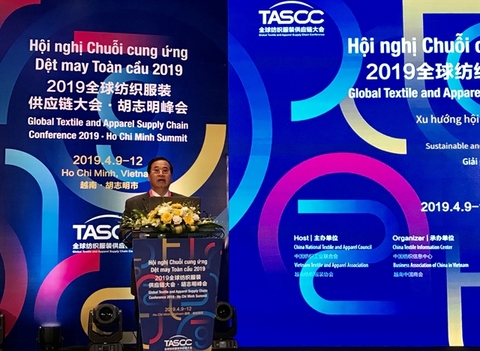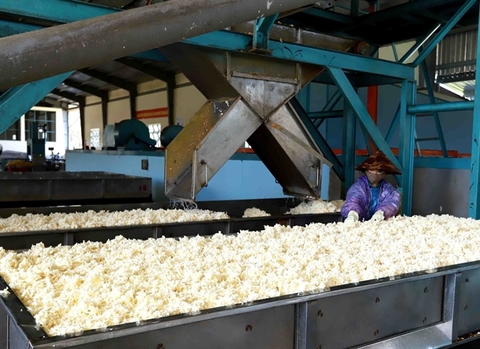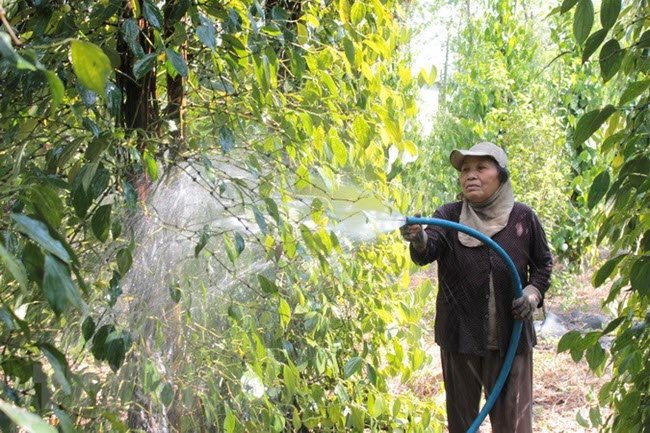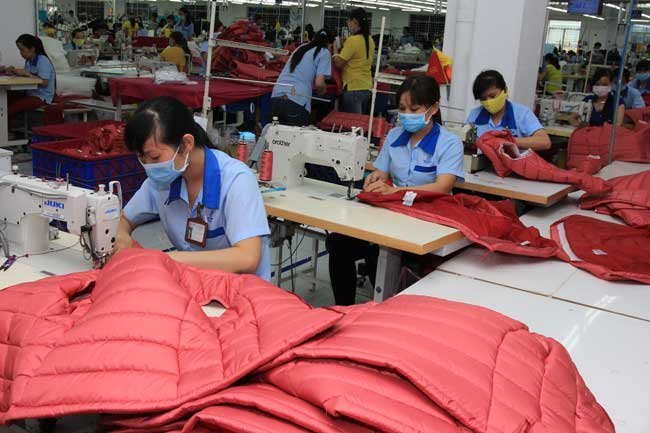Viet Nam to become "sustainable supplier of choice" for textiles and apparel
Viet Nam to become "sustainable supplier of choice" for textiles and apparel
Speaking at the 2019 Global Textile and Apparel Supply Chain Conference, Vu Duc Giang, chairman of the Viet Nam Textile and Apparel Association (VITAS), said the industry creates long-term and well-paid skilled jobs since it can offer affordable labour resources.

Labour costs in Viet Nam are relatively cheaper than those in China, Indonesia, Thailand and the Philippines.
“Free Trade Agreements (FTAs) also play an important role in helping Viet Nam move up the value chain in the textile and apparel industry,” Giang said.
The country's textile and apparel industry contributes 15 per cent of total export value and had an annual growth rate of 12 per cent from 2010 to 2017. FDI companies have so far invested about US$17.5 billion in the industry.
With some 6,000 factories and employing more than 3 million people, the industry is both economically and socially important for the country.
However, the sector has an adverse environmental impact. Intensive water extraction, use and discharge of waste water and high-energy consumption for water heating and steam generation are all environmental concerns.
Viet Nam is one of the largest exporters of apparel goods in the world, mostly because of its low-cost production rather than its environmental standards.
Green commitment
Viet Nam has committed to fully implementing 17 goals of the 2030 Agenda for Sustainable Development to ensure economic, social and environmental benefits.
“Implementing a shared responsibility to respond to the 21st century's biggest global challenge, Viet Nam and the international community ratified the Paris Agreement on climate change in 2015. And the textile industry is part of that commitment,” Giang said.
Viet Nam is also part of FTAs in which traditional tariff barriers will gradually be eliminated. However, instead of tariffs, countries could create technical barriers to protect their products.
Barriers could be related to product quality, environmental standards, energy labels, and carbon labels, among others.
VITAS set up an Environment Committee three years ago and has taken part in an action programme for the Green the Textile and Apparel Industry group.
However, the challenge is that fabrics and materials in the country still mainly depend on imports (99 per cent of cotton and fibers are imported every year), according to Giang.
Export processing is mainly CMT (Cut-Make-Trim - about 65 per cent), OEM (Original Equipment Manufacturer - 25 per cent), ODM (Original Design Manufacturer) and OBM (Original Brand Manufacturer - 10 per cent).
The technological level, except for sewing, remains modest, while another issue is low labour productivity, Giang noted.
Viet Nam-China partnership
Bui Hoang Yen, deputy representative of the Department of Trade Promotion under the Ministry of Trade and Industry, said it was important to develop a sustainable textile and apparel supply chain partnership with China.
Last year Viet Nam’s national textile and apparel exports reached US$36.2 million, with year-on-year growth of 16 per cent, she said.
The country has become the world’s third largest textile and apparel exporter after China and India.
Sun Rui Zhe, president of the China National Textile and Apparel Council, said the Chinese council has long been committed to promoting the social responsibilities of China’s textile and apparel enterprises.
In recent years, with investment from Chinese enterprises in Viet Nam, such as Shenzhou International, Youngor, Huafu Fashion, Luthai Textile, New Wide Group, Far Eastern Group and Jifa Group, the China-Viet Nam textile and apparel industry confluence is increasing.
It is important to establish a sustainable supply chain relationship for the development of the global textile and apparel industry and long-term competitiveness of the industry in China and Viet Nam, he said.
Initiated in 2008 and held each year by the China National Textile and Apparel Council, the conference is an international exchange platform committed to the management and brand development of textile and apparel supply chains.
The conference aims to improve supply chain management and competitiveness of Chinese textile and apparel enterprises, and facilitate their collaborative innovation in the international supply chain.
The conference was attended by nearly 200 delegates from the China National Textile and Apparel Council, China Textile Information Center, International Textile Manufacturers Federation, ASEAN Federation of Textile Industries and other international organisations such as WWF and World Bank.

















